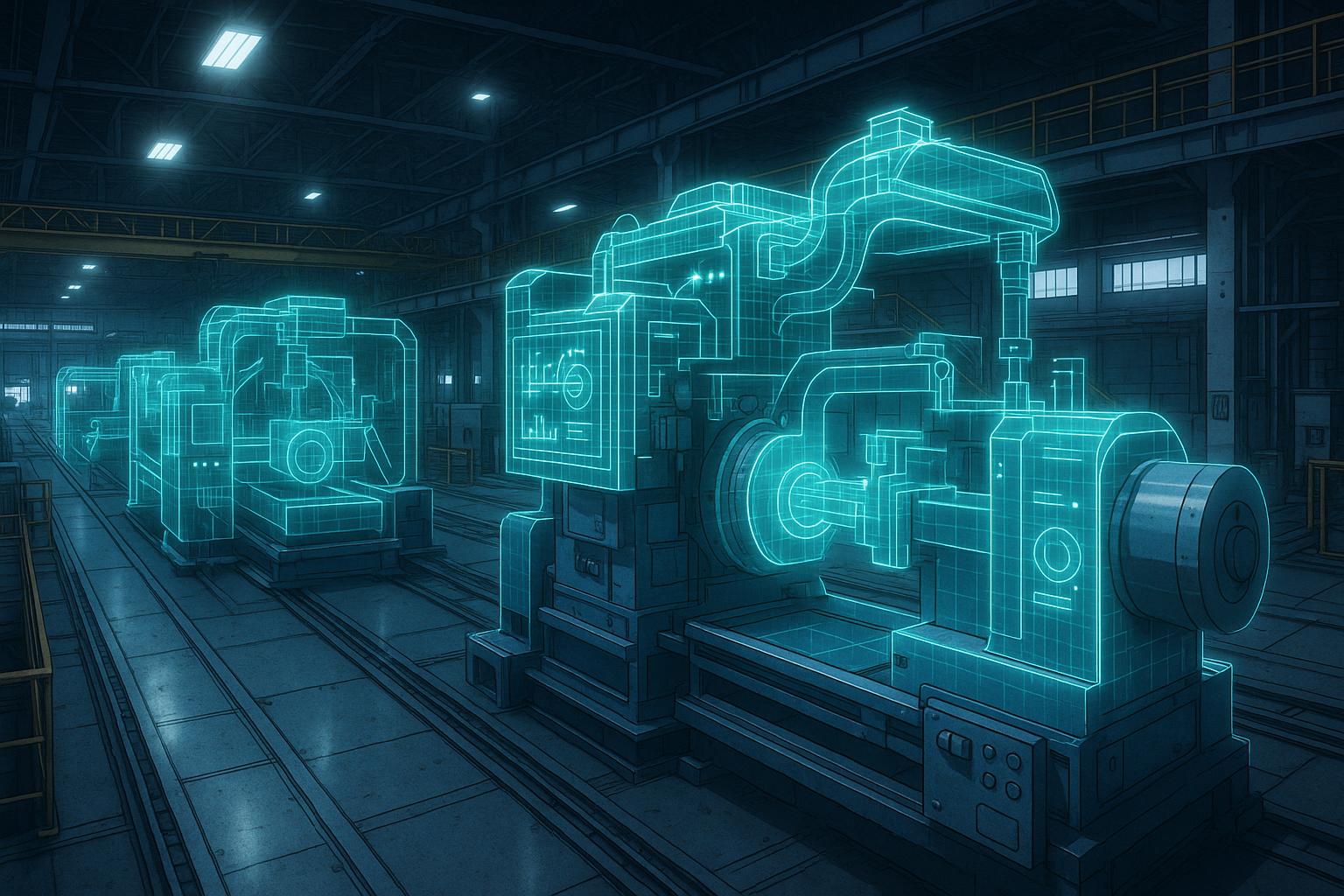Digital twins, once a concept confined to the realms of theory and literature, have emerged as pivotal players in modern manufacturing and quality control. These sophisticated digital replicas of physical assets—ranging from individual machinery to entire production lines—empower organisations to simulate, test, and optimise processes before implementing changes in the physical world. By reflecting the dynamics of actual systems in real-time data-driven models, digital twins facilitate precise predictions and error detection, revolutionising traditional approaches that often relied heavily on trial and error.
The manufacturing landscape is changing rapidly, driven by technological advancements that demand faster production cycles, greater automation, and tighter tolerances. In this evolving environment, the traditional methods of incremental adjustments and physical test runs are proving inadequate. Digital twins provide a transformative solution by offering a continuously updated virtual framework that delivers real-time insights into machine performance, environmental factors, and quality metrics. This innovative technology enables quality control specialists and engineers to foresee potential collisions, monitor machine health, and refine measurement processes without the necessity of halting production. Proactive decision-making—based on simulated outcomes rather than reactive problem-solving—affords manufacturers a significant competitive advantage marked by reduced downtime, minimized risk, and enhanced capacity for innovation.
Among the most compelling benefits of digital twins is their ability to facilitate predictive maintenance, a practice that allows organisations to address issues before they escalate into costly breakdowns. In conventional settings, machine maintenance is often performed according to a predetermined schedule or in response to evident problems. However, digital twins revolutionise this approach by utilising historical performance data and real-time sensor inputs to predict when components are nearing the end of their operational lifespan. This proactive strategy not only reduces the potential for unscheduled downtimes due to equipment failure but also allows for repairs to be scheduled during planned downtimes, ensuring consistent production flow.
In addition to predictive maintenance, digital twins enhance machine utilisation by illuminating usage patterns within a facility. Often, equipment is mismanaged, resulting in some machines being overused while others remain underutilised, incurring unnecessary wear and tear. By digitally replicating each machine, managers gain valuable visibility into real-time usage, enabling more balanced workload distribution that ultimately prolongs machinery life, reduces bottlenecks, and fosters overall productivity enhancements.
Moreover, digital twins afford a comprehensive view of the interaction between various machines, processes, and components in a production environment, significantly aiding collision detection—especially vital in robotics and multi-axis CNC equipment. In this capacity, they can anticipate crashes before they result in substantial downtime or damage. This added layer of operational safety exemplifies how digital twins enhance both efficiency and safety on the shop floor.
Data management is another critical area where digital twins provide significant advantages. They serve as a pivotal bridge between physical operations and analytical insights, enabling real-time feedback loops that allow production teams to compare actual performance against digital models swiftly. This capability significantly shortens measurement times, reduces tool changes, and accelerates quality checks, facilitating improved operational efficiency.
While the advantages of digital twins are pronounced, implementing this technology involves challenges, including significant initial investment costs. The requisite hardware—such as sensors and networking equipment—and software for simulation and data analytics can be prohibitively expensive, particularly for smaller manufacturers. However, many organisations find that upfront costs often justify themselves through gains in uptime, quality, and productivity over time. A thorough cost-benefit analysis is essential to align technological investments with broader strategic objectives.
Integrating digital twins into existing manufacturing frameworks presents its own challenges. As these systems often depend on real-time data streaming from interconnected sensors, ensuring data security is paramount. Additionally, interoperability with existing Manufacturing Execution Systems (MES) or Enterprise Resource Planning (ERP) software can be complex. Many older systems do not easily integrate with contemporary digital platforms, potentially necessitating upgrades or custom interfaces.
Lastly, the introduction of digital twins necessitates a shift in workforce training and organizational culture. Employees from machine operators to quality inspectors will require training in new software and a deepened understanding of data analytics to leverage digital twin technology effectively. Clear communication, demonstrable benefits, and a supportive training framework will be critical in fostering employee acceptance of these tools.
Looking ahead, digital twins are set to play an increasingly integral role in the future of manufacturing, driven by trends such as AI-driven analytics and the expansion of IoT capabilities. As machine learning algorithms become more sophisticated, digital twins will likely evolve to provide even more nuanced predictive modelling. Furthermore, as cloud technology becomes more widely accessible, even small to medium-sized manufacturers will be able to adopt digital twins without substantial infrastructure costs.
In summary, digital twins are not merely a technological trend but a transformative approach that could redefine manufacturing processes by enhancing operational efficiency, ensuring superior quality control, and optimising supply chains. As the industry continues to evolve towards Industry 4.0, investing in digital twin technology may provide a crucial competitive edge for manufacturers poised to thrive in a fast-paced market. With real-time data and advanced simulations at their disposal, companies can preemptively navigate potential challenges, equipping them to maintain leadership in an increasingly complex manufacturing landscape.
Reference Map:
- Paragraph 1 – [1], [2]
- Paragraph 2 – [1], [3], [4]
- Paragraph 3 – [1], [5], [6]
- Paragraph 4 – [4], [5]
- Paragraph 5 – [1], [6], [7]
- Paragraph 6 – [3], [4], [7]
- Paragraph 7 – [1], [2]
- Paragraph 8 – [3], [5], [6]
Source: Noah Wire Services
